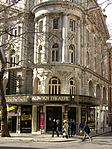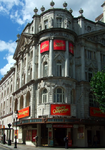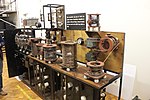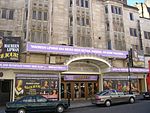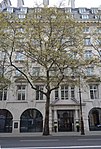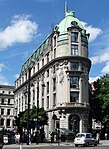The Waldorf Hilton, London
1908 establishments in EnglandAldwychHilton Hotels & Resorts hotelsHotel buildings completed in 1908Hotels established in 1908 ... and 1 more
Hotels in London

The Waldorf Hilton, London, formerly known as the Waldorf Hotel, is a historic hotel in the Aldwych, London. It is part of the Hilton Hotels & Resorts chain and has a history dating back to 1908. The hotel was originally established by William Waldorf Astor, 1st Viscount Astor, a member of the prominent Astor family. The hotel features 298 guest rooms, including 19 suites.
Excerpt from the Wikipedia article The Waldorf Hilton, London (License: CC BY-SA 3.0, Authors, Images).The Waldorf Hilton, London
Aldwych, London Covent Garden
Geographical coordinates (GPS) Address Phone number Website External links Nearby Places Show on map
Geographical coordinates (GPS)
| Latitude | Longitude |
|---|---|
| N 51.5126 ° | E -0.1189 ° |
Address
The Waldorf Hilton, London
Aldwych
WC2B 4DD London, Covent Garden
England, United Kingdom
Open on Google Maps
